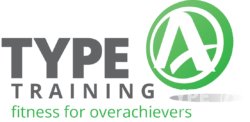Getting your child active doesn’t have to mean gym classes or fancy machines. If you turn exercise into play, moving around just becomes part of the day.
Fun movement lets kids burn off energy and supports their learning and behavior at school. It might even bring your family closer together—who doesn’t love a little friendly competition?

Experts suggest that children and teens should get at least an hour of physical activity every day. Simple games and exercises at home don’t need much space or any special gear.
Popular posts:
Mixing up different activities for just a few minutes at a time makes it a lot easier to keep your child moving.
Key Takeaways
- Daily movement can be playful and easy to add at home.
- A mix of activities helps build strength, balance, and energy.
- Simple routines support better focus and learning in kids.
Jumping

Jumping really gets your heart going. It helps you build stronger muscles and boosts your endurance.
Try turning it into a friendly contest with family or friends—who can jump the highest?
Popular jumping moves include:
- Criss-cross feet: Jump up, cross one foot in front of the other, and switch feet with each jump.
- Hurdle hops: Pretend there’s a hurdle and leap over it, either side-to-side or front-to-back.
- Jumping jacks: Arms and legs wide in the air, then back to your sides as you land.
- One-foot hops: Hop on one leg, lift your knee, then switch legs.
- Tuck jumps: Bring your knees up to your chest as you jump.
Maybe make a simple chart and see how many jumps you can do in a minute. It’s a fun way to track your progress (and show off).
Skipping
Skipping is a great mix of fun and exercise. It helps you work on balance and coordination while building endurance.
There are so many ways to add skipping to your day, and most of them are pretty easy.
Try these popular skipping activities:
- Hopscotch: Use chalk or tape for a numbered grid. Toss a small item onto a square, then skip, hop, or jump over that spot to the end and back.
- Jumping Rope: Use a jump rope for a set time. Make it more interesting by moving forwards, backwards, or counting jumps to see who gets the most.
- Obstacle Course: Set up chairs or pots to create a course. Skip around or over each obstacle and time yourself to see if you can beat your own record.
- Skipping Tag: Play tag, but everyone has to skip instead of run. Or try hopping on one foot or moving in some other silly way.
A table to help you pick a skipping activity:
| Activity | Equipment Needed | Skill Focus |
|---|---|---|
| Hopscotch | Chalk/Tape, Marker | Balance |
| Jump Rope | Rope | Coordination |
| Obstacle Course | Household Items | Agility |
| Skipping Tag | None | Teamwork |
Skipping seems simple but can actually be tricky, keeping you moving and laughing the whole time.
Exercise Games
Exercise games are a sneaky way to get moving and have fun. These games use your whole body and help improve big movements like running, jumping, and balancing.
They also encourage teamwork and a bit of friendly competition, which makes exercise feel more like play than work.
Corners is a simple indoor game. Give each player a corner as their “home.” Everyone runs in a circle until you give a signal—then they dash back to their home and do a quick exercise, like jumping jacks or a plank.
Let kids pick the exercise for each round to keep things interesting.
Go Back and Hit It mixes running with quick changes. Run forward in your lane until the leader says “back” (run backwards) or “hit it” (add a squat or tuck jump). It’s great for coordination and listening skills.
The Squat Relay is all about movement and teamwork. Stand on opposite sides of the room, then run to meet in the middle. Once you meet, do three squats, giving double high-fives each time. Then head back to your spot and do it all again.
For something different, try Traffic. It’s like “red light, green light” but with extra moves—stop on “red,” run on “green,” shuffle sideways on “yellow,” do bunny hops at “speed bumps,” and run with a partner for “carpool.” You can always invent new signals too.
Trying out these exercise games can turn regular movement into an adventure. If you want even more ideas, check out these indoor fitness games for kids and exercise games and activities.
Indoor Ball Games
Indoor ball games are perfect for keeping kids active when space is tight. Tossing a ball into a laundry basket or rolling it across the floor is easy to set up and helps boost coordination.
You can make up games where kids hit soft balls at a target with a wooden spoon or another safe object. Or try catching a ball in a mixing bowl, or playing gentle wall ball.
Here are a few quick ideas in a table:
| Activity | Equipment Needed |
|---|---|
| Basket toss | Laundry basket, ball |
| Wall bounce | Soft ball |
| Spoon target game | Spoon, ball, target |
| Bowl catch | Mixing bowl, ball |
Stick with soft balls like foam or beanbags for safety. If you use harder balls, maybe add some light protective gear, especially for littler kids or anyone new to the game.
Need more ideas? Check out these creative indoor ball games and classroom activities.
Running
Running is about as simple as it gets for staying active and healthy. You can do it almost anywhere—outside on the grass, or indoors if you’ve got the room.
To keep it from getting boring, try mixing things up. Switch between regular running, skipping, or running in place with super quick “fast feet.”
Add some changes in direction—side to side, backwards, whatever feels fun. That builds coordination and works different muscles.
Want to make it a game? Try relay races with friends or family. Here’s a quick list of ways to spice up your running routine:
- Run forward, backwards, and sideways
- Mix in skipping
- Practice running with “fast feet”
- Join in a relay race with friends
Squats and Lunges
Squats and lunges are go-to moves for building lower body strength and improving balance.
You don’t actually need heavy weights to get results from these exercises. Using just your body weight helps you focus on form and control before thinking about adding any extra resistance.
Squats mainly work your legs and glutes.
When you do squats with good technique, you’re building up your thighs, hips, and even your core.
Start by standing with your feet about shoulder-width apart. Keep your chest up and your back nice and straight.
As you lower your hips, picture yourself about to sit down in a chair. Lower until your thighs are roughly parallel to the floor, then push back up.
Try to keep your knees behind your toes the whole time. It’s trickier than it sounds, but you’ll get the hang of it.
Lunges are great for your quads, hamstrings, and balance.
Begin with your feet together and stand tall. Step forward with one leg and lower your hips until both knees are bent at about 90 degrees.
Watch that your front knee stays over your ankle and doesn’t go past your toes. Push back to the start and switch legs.
Stronger legs make so many things easier, from playing sports to just climbing stairs. If you nail the basics, you’ll help prevent injuries down the road.
Types of Squats and Lunges
There are plenty of ways to mix things up and keep these moves interesting. Here are some simple variations worth trying:
| Exercise | How to Do It | What It Targets |
|---|---|---|
| Bodyweight Squat | Lower your body until your thighs are parallel to the floor | Quads, glutes, core |
| Jump Squat | Perform a squat, then jump up as high as you can as you stand up | Quads, glutes, calves, balance |
| Side Lunge | Step out to the side, bending one knee and keeping the other leg straight | Inner thighs, hips, glutes |
| Reverse Lunge | Step backward into a lunge instead of forward | Quads, glutes, hamstrings, balance |
| Walking Lunge | Lunge forward one leg at a time, moving across the room as you go | Quads, hamstrings, glutes, core |
Swapping in different versions keeps things fresh and challenges your muscles in new ways.
If you’re curious for ideas, check out this leg workout for kids or watch a full body exercise session for kids.
Tips for Safe Squats and Lunges
- Make form your top priority.
- Look forward and don’t let your knees drift past your toes.
- Move slowly and stay in control.
- Keep your core tight to protect your back.
- Try using a mirror at first to check your posture.
- Start with fewer reps and add more as you improve.
For young athletes, quality beats quantity every time. It’s better to do a few with great form than a bunch with sloppy technique.
Why These Moves Matter for You
Squats and lunges do more than just build strong legs—they get your whole body working together.
They make your ankles, knees, and hips more stable, which can help you avoid falls and injuries, whether you’re playing sports or just running around the playground.
With a stable core and stronger legs, you’ll be more ready for just about anything—running, jumping, or even standing in line at school.
As you practice, your muscles start working together better, and you’ll probably notice you move more smoothly and react faster in games.
Using Equipment
If you’re feeling confident, you can add a little weight. Hold a dumbbell at your chest for a goblet squat or use light weights in each hand for lunges.
Don’t go too heavy. Form always comes first, no matter what.
Here’s a quick checklist:
- Start small. Use weights you can handle easily.
- Get help. Ask a coach or adult if you’re not sure how to move safely.
- Stay balanced. If you’re wobbly, that’s a sign the weight might be too much.
- Rest when needed. Take breaks between sets so your body can catch up.
Sample Routine
Here’s a basic way to work squats and lunges into your day:
- Warm up: 5 minutes of easy movement (marching in place, jumping jacks, or jogging).
- Bodyweight squats: 2 sets of 10-12 reps
- Forward lunges: 2 sets of 8-10 reps for each leg
- Rest 1 minute
- Side lunges: 2 sets of 10 reps for each leg
- Jump squats: 2 sets of 10 reps
- Cool down: Stretch your legs and hips
You can do this routine pretty much anywhere—living room, park, wherever.
Making Progress
As you get stronger, try adding an extra set or a couple more reps to each move.
Or slow down the movement to make it tougher. Small tweaks like these keep you moving forward.
When you’re ready for something new, try variations like squat and kick or add short bursts of jumping for extra power.
If things get boring, challenge yourself—maybe see how many steady lunges you can do without stopping.
Keeping Track
It’s not a bad idea to keep a simple chart and watch your progress stack up. Here’s one way to do it:
| Date | Squats (sets x reps) | Lunges (sets x reps) | Notes |
|---|---|---|---|
| May 30 | 2 x 12 | 2 x 10 per leg | Felt good, kept form |
| June 2 | 2 x 14 | 2 x 12 per leg | Added extra reps |
| June 5 | 3 x 12 | 3 x 10 per leg | Legs sore but stronger |
Looking back can really boost your confidence and help you set new goals.
Common Mistakes to Avoid
- Knees past your toes. This puts stress on your joints.
- Leaning forward too much. Watch your back—keep it straight.
- Going too fast. Slow and steady wins here.
- Not switching legs on lunges. Keep things even for both sides.
- Too much weight too soon. Start light and only add more when you’ve nailed your form.
Encouraging Good Habits
Regular practice teaches your body to move safely and stay strong.
Squats and lunges help with sports, playtime, and just about any daily task. Doing them with friends or family can make things more fun and give everyone a little extra motivation.
Coaches and parents are great for checking your form and giving reminders. If you’re ever unsure, just ask.
Watching videos or following along with an instructor online can also help—this lunge demonstration is a solid place to start.
Adding Fun to Squats and Lunges
Exercise doesn’t have to be boring—turn it into a game! Challenge your friends to see who can do the most squats in a minute or who can hold a lunge the longest.
You can even sneak in squats or lunges between other games to keep moving without even realizing you’re working out.
Recovery Is Important, Too
Your muscles need time to rest so they can get stronger. Don’t skip stretching after your workout.
Drink some water and grab a healthy snack with protein to help your body bounce back.
How Squats and Lunges Fit into a Bigger Plan
These moves are the backbone of a solid workout plan. Mix them in with other exercises and you’ll be working every part of your body.
Think of squats and lunges as your strength foundation. When you’re ready, add in moves like push-ups or planks for even more muscle-building.
Practicing safe, strong squats and lunges sets you up for all kinds of activities. It also helps you move better and feel more confident—can’t argue with that.
For more ideas on lower body exercises for kids, check out this guide on lunges for kids. These basics are honestly the start of healthy movement and real strength at any age.
Sit-Ups and Push-Ups
Kids can get stronger with the classics: sit-ups and push-ups. There are all sorts of ways to do them, too.
- Sit-Ups/Crunches: Try regular sit-ups, bicycle crunches, or legs-up sit-ups—they all help build core muscles.
- Push-Ups: Go for classic push-ups or keep your knees on the ground to make it easier. Either way, you’re training your upper body and core.
Mixing these moves into games or circuits—or even making them a race—makes things way more fun. Plus, these exercises support the muscles you use for sports, dance, and just everyday stuff.
| Exercise | Main Muscles Worked |
|---|---|
| Sit-Ups | Abs, hip flexors |
| Push-Ups | Chest, arms, core |
Try working these into your routine and see how much stronger you get.
Crab Walk
The crab walk is a playful exercise—honestly, it just looks silly—that strengthens your arms and core while keeping you moving. To try it, sit on the ground with knees bent and feet flat.
Plant your hands behind you for support, lift your hips, and start scooting around using your hands and feet. It’s a goofy position, but it works your muscles and gets your heart going.
Want to spice things up? Try the balancing game by putting a toy or cup on your stomach—see how far you can go without dropping it. Or, you could set up a crab walk obstacle course with pillows or cones to climb over and dodge.
Crab walk races are always a hit, too. A little friendly competition never hurts, right?
These twists help build coordination and spark creative movement. There’s more on the benefits and playful variations at crab walk.
Bear Crawl
The bear crawl has you moving on your hands and feet, belly facing the ground. It’s a simple way to work your whole body, especially arms, legs, and core.
Start by practicing the basic crawl movement. Once you’ve got the hang of it, add a few obstacles or race to different spots.
If you’re feeling brave, try carefully leaping over each other’s backs mid-crawl. It’s a bit wild, but kids usually love it.
Bear Crawl tips:
- Keep your knees off the floor
- Move slowly for control
- Try to keep your back flat
Yoga and Stretching
Yoga gives your child a safe space to move, grow, and get curious about their body. It’s a blend of gentle stretches, balancing, and breathing—nothing too intimidating, just a way to help kids develop physically and mentally.
Regular yoga and stretching are key for building stability, flexibility, and emotional strength as kids grow. You can’t really go wrong with a little bit of stretching in the mix.
Benefits of Yoga and Stretching
Here are some of the main perks of adding yoga and stretching to your routine:
- Better balance and body control
- Improved stability and core strength
- Increased flexibility and range in movements
- Greater body awareness
- Support for emotional regulation
- Reduced stress and anxiety
Yoga focuses on poses that challenge your child’s balance. Standing poses, like tree pose, help kids find their center and steady themselves.
Even basic stretches—like reaching for the toes or stretching arms overhead—wake up sleepy muscles and improve coordination. Sometimes it’s the simplest moves that make the biggest difference.
Stability and Balance Skills
Balance is one of those skills that just gets better with practice. Yoga offers all sorts of creative ways for kids to control and stabilize their bodies.
Poses like tree, eagle, and airplane challenge kids to stand tall and build confidence, bit by bit.
- Tree Pose: Stand on one leg, place the other foot inside the standing leg’s inner thigh or calf, and balance. Arms can reach overhead or stay at the chest.
- Airplane Pose: Stand and tip forward, lifting one leg straight behind, spreading arms wide, and looking forward for balance.
- Cat-Cow Pose: Switching between arching and rounding the spine helps with back stability and strengthens supporting muscles.
Growth in these poses brings greater confidence as children practice holding still and adjusting to little wobbles. With calming yoga poses for kids, students can stretch, balance, and learn body control—all while having fun.
Building Flexibility and Strength
Stretching is important for keeping your child’s muscles loose and joints happy. Most kids’ yoga routines use easy stretches to warm up and boost flexibility.
| Pose | Main Benefit | How It Helps |
|---|---|---|
| Downward Dog | Leg, arm, and back stretch | Lengthens spine and builds strength |
| Pigeon | Hip and glute flexibility | Softens tight hips |
| Cobra | Back strengthening | Opens chest, stretches spine |
| Butterfly | Hip openness | Makes sitting more comfortable |
| Child’s Pose | Relaxation, gentle stretch | Calms the body and relaxes muscles |
Over time, flexibility leads to better posture and a stronger sense of comfort in their own bodies. Kids who stretch often are less likely to feel stiff or achy as they grow.
Yoga for Posture and Alignment
Kids who practice yoga learn to sit and stand straighter. Poses that lengthen the spine and open the chest help build habits for good posture.
- Mountain pose teaches your child to stand tall, feet planted, shoulders back.
- Seated stretches, like reaching both arms up, gently correct slouching.
- Balancing exercises make the body use smaller muscles along the spine, supporting healthy alignment.
Good posture isn’t just about looking neat—it helps with breathing and focus, too. When you’re comfortable, it’s just easier to pay attention.
Supporting Emotional Wellness
Yoga and stretching aren’t just about physical health; they’re surprisingly effective for emotional stability. Through guided breathing and slow movement, kids learn to handle emotions in a calmer way.
When your child does poses like child’s pose or practices mindful breathing, their body signals the brain to chill out. This calms the nervous system and helps kids learn self-regulation, which is honestly a skill we could all use.
With regular practice, yoga can boost mood and help kids manage frustration or disappointment. As they get more in tune with themselves, they can spot their own feelings and choose how to respond.
Mindfulness and Focus
A lot of yoga exercises are about staying present. Sometimes it’s holding a pose for several breaths, other times it’s just focusing on slow, steady breathing.
During these exercises, kids learn how to tune out distractions and concentrate on the moment. This habit can really pay off in daily life—think better attention in class or calmly dealing with tricky situations.
Gentle routines like Yoga with GoNoodle show how breathing and stretching can sharpen focus and clear the mind a bit.
Coordination and Motor Planning
Yoga asks children to move in specific, sometimes tricky ways—raising a leg, twisting, shifting weight. These actions build hand-eye coordination and help both fine and gross motor skills.
Some yoga moves that really work coordination include:
- Cat-Cow: Moving between rounded and arched spines, matching breath
- Warrior Poses: Moving arms and legs together to build rhythm and strength
- Sun Salutations: Flows where the body transitions between several poses
Kids get better at judging how much to bend, stretch, or balance, which can help in sports, dance, or just everyday stuff like tying
Energy and Relaxation
A quick yoga break can help your child burn off extra energy or wind down after a long day. Short routines like the 10-minute yoga for kids mix movement with rest, helping kids reset and come back to activities with a clearer head.
The movement wakes up tired bodies, while the quiet moments help when your child needs to slow down. Stretching before bed can help with sleep, and before homework can boost alertness—worth a try, right?
Encouraging Lifelong Healthy Habits
Starting yoga young builds habits that can stick for life. Your child learns to love daily movement and self-care, and maybe even how to listen to their own body—like knowing when they’re tired or stressed and what to do about it.
Yoga can really boost self-esteem, too, as kids master new poses and notice their progress. It’s not about competition, just feeling strong, calm, and comfortable in their own skin.
Animal yoga poses or guided stretches designed for kids keep things playful, which makes sticking with it way easier. Here’s a fun one: animal yoga poses.
Creating a Supportive Routine
Consistency is the real secret. Try to fit yoga or stretching into your child’s routine—even just a few minutes a day is a win.
Mornings, before bed, or after school are all pretty good times for a quick routine. If you’re new to yoga, start simple and listen to your child’s feedback.
Ask how each stretch feels and let them stop if something’s uncomfortable. Videos, printed guides, or group classes for kids can help if you’re not sure where to start.
Sample Yoga Routine for Kids
Here’s a simple routine you can try together:
| Pose | Hold Time | Tips |
|---|---|---|
| Mountain | 5 breaths | Stand tall, arms by side or overhead |
| Tree | 3 breaths each side | Use a wall for support if needed |
| Cat-Cow | 5 rounds | Move slowly, match breath to movement |
| Downward Dog | 5 breaths | Spread fingers, press heels down |
| Butterfly | 5 breaths | Sit tall, bring soles of feet together |
| Child’s Pose | 10 breaths | Kneel, sit back on heels, arms forward; rest here before ending |
Make it playful—add animal names, gentle music, or ask what each pose makes you feel like. It doesn’t have to be perfect, just fun and a little bit different every time.
Key Points for Parents and Caregivers
- Let your child set the pace—yoga shouldn’t hurt, ever.
- Encourage them to try new poses, but don’t push. Pressure ruins the fun.
- Notice and celebrate the little wins, like holding a pose for a few more seconds or even just attempting something new.
- Keep things fun. Yoga’s meant to be playful, not a chore.
Yoga and stretching can help your child build strength and flexibility. It’s also a pretty solid way to introduce calmness and self-control, honestly.
If they stick with it, you’ll probably notice more balance and joy in how they move. And hey, a little focus never hurt anyone.














